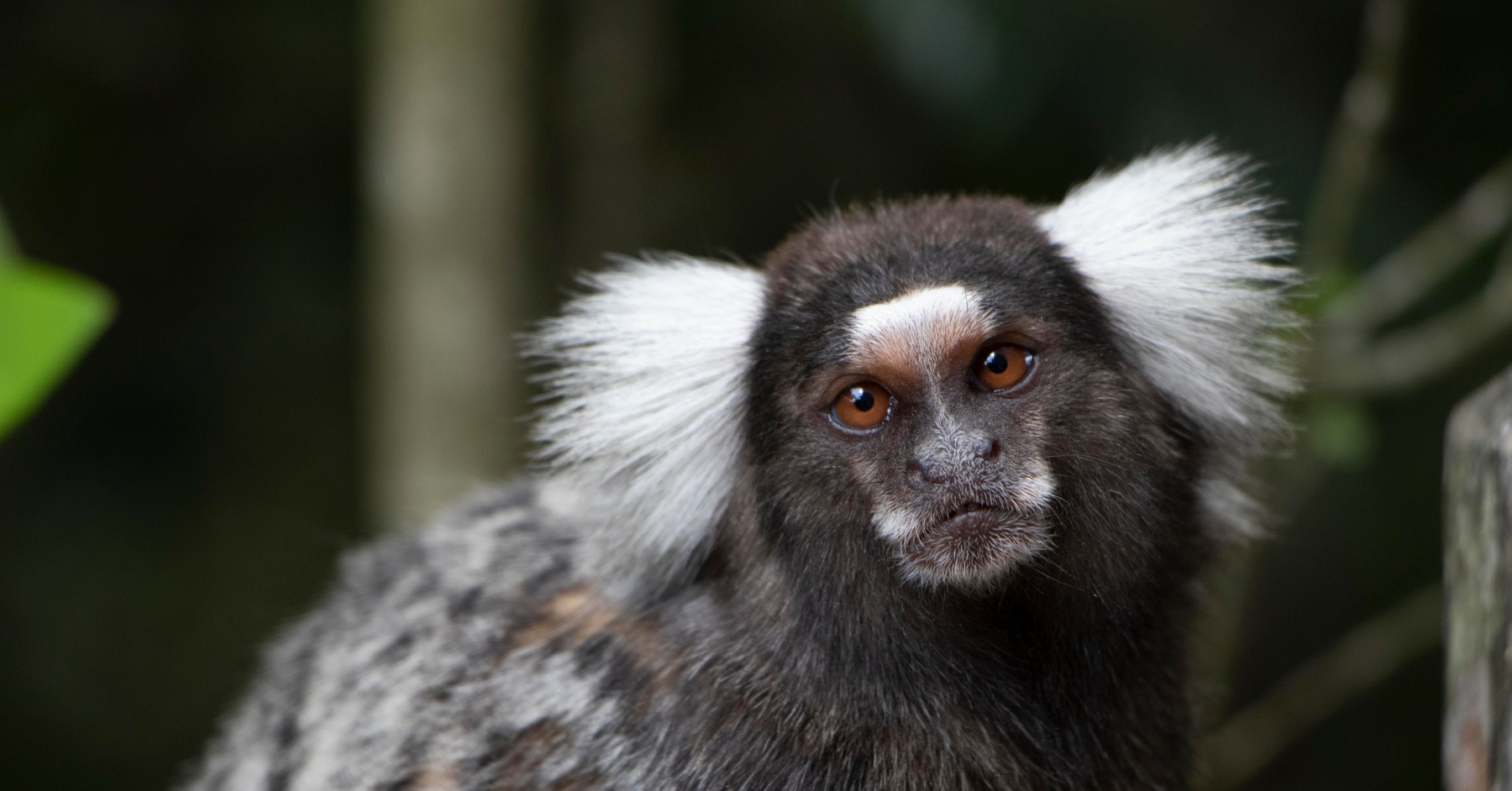
Marmosets are small, long-tailed monkeys native to certain Atlantic coastal forests of South America and closely related to humans. They are adorable, complex, fascinating creatures!

- 2: The number of babies marmosets typically birth at once! Unlike other primates (including humans, who usually “give birth to only one infant at a time”), common marmosets most commonly birth non-identical twins! (They can also “produce offspring that are genetically the offspring of their nonidentical twin, instead of their own. This is called germline chimerism.”)
- 4: The number of limbs marmosets use when they run! They “navigate their environment by running quadrupedally (on all fours)”, “leaping across trees” and “scamper[ing] among branches – leading some to describe them as “behav[ing] a lot like squirrels”.
- 7: The average height of common marmosets in inches (though their tails, ranging from ten to sixteen inches, more than double their length)!

- 8: The number of ounces that an average, female, common marmoset weighs! (An average, male, common marmoset weighs 9 ounces.)
- 9: The average number of marmosets who comprise a “troop”, or living group! Like humans but unlike other nonhuman primates, marmosets are “socially monogamous and cooperative breeders” who live in “stable and solid social grouping[s]” (ranging in size from three to fifteen monkeys). All group members help care for the group’s young (with fathers often being “the main caregivers of the offspring”), and group members sleep together.
- 15+: The number of different types of vocalizations produced by marmosets during “natural social communication”! Marmosets make “specific sounds” to “communicate specific messages”; “use individual voice patterns to identify each other at a distance”; sound “alarm calls to warn when predators are near”; and take turns talking when engaging in conversations! (Marmosets also communicate non-verbally – for example, they use “facial expressions” to “communicate their emotional state” and maintain “social eye contact more similarly to the way humans do than other closely related primates”.)
- 16: The age of some of the most senior marmosets in the wild! (Wild marmosets typically live between five and sixteen years.)

- 22: The number of identified marmoset species, which includes “common” or “white-turfted ear” marmoset – the “world’s smallest primate”!
- 50+: The percent of marmosets’ “daily activities” typically spent “gouging trees”* and “foraging” (for berries and seeds). (*Marmosets “bite trees with anterior teeth to cause a flow of plant sap, which makes up the major portion of their food….”)
- 5,000-65,000: The number of square meters that comprise territories for common marmoset troops.